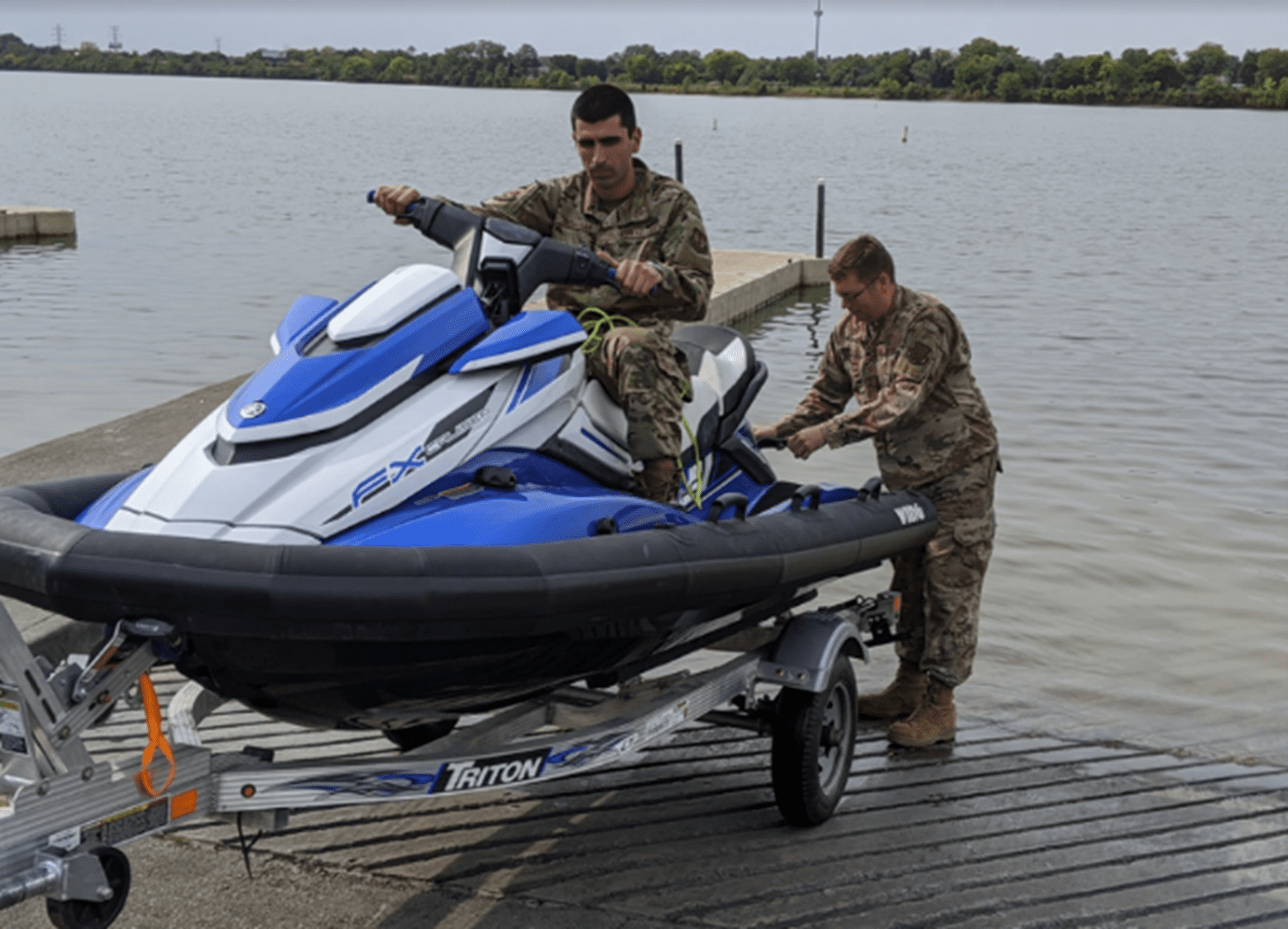
Written by: Laura Dempsey
Unmanned systems aren’t just for aircraft anymore.
The Air Force Research Laboratory’s Sensors Directorate (AFRL/RY) has taken the idea of unmanned vehicles to the water with the Autonomous Aquatic Rescue Craft (A-ARC). The A-ARC is essentially a jet ski that can operate with or without a pilot in combat search and rescue (CSAR) operations that involve personnel recovery. The impact of the A-ARC can’t be understated: Use of this unmanned vehicle has the potential to save lives without putting more lives at risk.
Wright Brothers Institute-Works, a collaborative space designed for large-scale prototyping and testing, was enlisted to provide technical expertise, electronics integration, machining, woodworking, welding and logistics support. The A-ARC was successfully demonstrated in December 2020 to the 123rd Special Tactics Squadron in Louisville, where the team successfully demonstrated capabilities that included remote operation, manned operation and unmanned autonomous operation. A communications upgrade now enables the A-ARC to operate at a longer range and communication with airborne assets.| Personnel Recovery is a Priority “Within this environment, our adversaries perceive our efforts to recover a single individual as a blue force vulnerability. As a result, we see multiple coherent adversary campaign plans objectively isolating personnel as a means for challenging our collective strategies. Such targets not only involve USG personnel, but include our allies and partners as well.”
| The A-ARC team, which included WBI-Works Electrical and Computer Engineering Technologist Claude Nicol, then traveled to Patrick Air Force Base, Florida, for ocean testing. A successful showing there will be followed by participation in the Sunshine CSAR Exercise in early 2021. Not surprisingly, this project has attracted interest from Special Tactics Squadron (STS) and Rescue Squadron (RQS) units; Air Force Materiel Command (AFMC); U.S. Special Operations Command (USSOCOM); U.S. Air Forces Central (AFCENT); Air Combat Command (ACC) to name a few. The A-ARC could change the concept of operations for search and rescue missions, in addition to providing an autonomous platform applicable to multiple other capabilities. Also, by sniffing for hydrazine while providing personnel transport, the A-ARC will quite possibly impact the Human Space Flight Mission. |

